Japanese Cold War Trucks (1950-90)
The Japan Ground Self-Defense Force (JGSDF) uses a variety of trucks and vehicles for its operations, including troop transport, cargo transport, logistics, and specialized functions. These vehicles are designed to meet the specific needs of the JGSDF and are often manufactured by Japanese companies. Among most famous models were the Mitsubishi Type 73 (a series of medium-duty military trucks used for various purposes, including troop transport, cargo transport, and as a platform for specialized military equipment), the Isuzu Type 73 (Similar to the Mitsubishi Type 73, Isuzu Type 73), used als for transportation and logistics. Hino Ranger, including cargo transport, troop transport, and logistics support. But also the Toyota Mega Cruiser four-wheel-drive reco/liaison vehicle used by the JGSDF for various roles, including troop transport and command vehicles. More recently there is the Nissan X-Trail, compact SUV usable for various purposes within the JGSDF, the Kawasaki KLX lightweight motorcycles for reconnaissance and communication purposes. And there are a flurry of specialized Vehicles for specific tasks, recovery vehicles, engineering vehicles, and command and control.
Incoming articles
Hino Ranger medium truck (1964)
Hino 700 heavy truck (2006)
Isuzu HTS12G 2.5 ton truck (1968)
Isuzu Type 73 Heavy Truck (1973)
Isuzu Type 94 (M2594, 1934, still used 1950s)
Isuzu TX (1937 - still used 1950s)
Isuzu TW340 (1957)
Isuzu TWD20/25 medium truck (1965)
Isuzu TSD45/TSD55 medium truck (1975)
Mitsubishi Fuso Type 74 (1985)
Mitsubishi Fuso Super Great (1983)
Mitsubishi W23/W121/W200 (1955)
About Isuzu
Isuzu Motors Ltd. now a Japanese multinational automobile manufacturer (HQ Yokohama, Kanagawa Prefecture) is specialized in commercial vehicles and diesel engines (diesel-powered truck, buses and construction vehicles) which spread its winds internationally to Anadolu Isuzu (Turkey), Sollers (Russia), SML Isuzu (India, former Swaraj Mazda), Jiangxi Isuzu Motors in China, a partnership with Jiangling Motors, Isuzu Astra Motor Indonesia, Isuzu Malaysia (HICOM), Industries Mécaniques Maghrébines, Isuzu UK, South Africa, Philippines, Taiwan, Vietnam, as well as Isuzu Motors India and BYD Isuzu. Manufacturing plants are located at Fujisawa, where the company was founded and Tochigi and Hokkaidō prefectures. Being familiar with trucks and 4x4 vehicles, it was only logical that the company would provide the new JSDGF. The company Name means "fifty bells".
Historically, the company prior to this was Tokyo Automobile Industries Co., Ltd. founded to manufacture heavy duty trucks and passenger busses, and it became one of the primary manufacturers for the Imperial Japanese Army along with Mitsubishi Heavy Industries (Yasuda Zaibatsu). The
Sumida M.2593 armored personnel carrier was one of its rare armoured vehicles. In 1942, Hino Heavy Industries emerged from Tokyo Automobile Industries and postwar, the company was renamed after the Isuzu River in 1949 after a reunion between the Ministry of Trade and Industry (MITI).
For the cold war Japanese Military, the company produced the TW340 medium truck, TWD20/25 medium truck, TSD45/TSD55 medium truck, HTS12G 2.5 ton truck and Type 73 Heavy Truck.
About Mitsubishi Fuso HI

About as spectacular and best example of these multiple industrial branches, Mitsubishi was also a giant of armoured vehicles during the cold war, engineering all main battle tanks and armoured personal carriers of the JSDGF. The old Zaibatsu was founded as a shipping firm by Iwasaki Yatarō (1834–1885). It diveresified in ship contruction, aircraft construction, engines, and all sorts of vehicles, including those of the Imperial Japanese Army. As for more modern trucks, they emerged postwar of the Mitsubishi Fuso Truck and Bus Corporation (三菱ふそうトラック・バス株式会社) a brand separate founded in 1932 and specialized for trucks and buses, headquartered in Kawasaki (Kanagawa prefecture) but now own in majority by Daimler Truck. This also has benefits of technology transfer for heavy and specialized vehicles. "Fuso" in fact is a bywork for military Mitsubishi Trucks today.
Fuso motos sales was established in 1948, and in 1950, the split between the West/Central/East Japan Heavy Industries was yet reorganized again in 1952 whereas Fuso Motor Sales Company became the Mitsubishi Fuso Motors Sales Company. Under its guise a brand new generation of trucks, buses and speciality vehicles was built, inclusing those for the JSGDF. This was not over as by 1957, MNHI integrated the Tokyo and Kawasaki Works, creating the Tokyo Motor Vehicle Works which in 1964 fused into Mitsubishi Fuso Heavy Industries. Separated into the Shin and Fuso Motors Sales Company the distribution was split beteen heavy and light machinery. The former is now under the brand "fuso".
In MFHI transferred its motor-vehicle operations to MMC, in 1975, MMC opened the Nakatsu Plant (Tokyo Motor Vehicle Works) and in 1980 the Kitsuregawa Proving Grounds to test military vehicles of the company. In 1984 MMC merged with Mitsubishi Motor Sales Company and by 1985 MMC and Mitsubishi Corp. created a joint-equity called "Mitsubishi Trucks of America" to enter the US market. Later MMC would create a joint venture with Chrysler, Volvo joined in 1999 (adding more trucks and heavy vehicles skills) and MMC merged with DaimlerChrysler.
The company manufactured the following:
-Canter aka FE/FF/FG/FH from 1963 (also Sterling 360)
-Canter Guts (Canter Mini FA/FB/FC/FD)
-Fighter aka FH/FK/FM/FL (1984) and "The Great"
-Super Great/Heavy Duty aka FP/FS/FV (1996)
-Fuso FJ (India: BharatBenz)
-Fuso TV (Malaysia and Thailand)
-Fuso FI
As for proper military trucks, the one that replaced imported US M35s was the Type 73. This section will be completed over time. Notably Nissan and Toyota 1950s trucks. It should be added that before these models came around, the main military trucks in use were WW2 models as well as the early cold war M35 standard 6x6. As for light vehicles, Willys Jeeps were used.
About Hino Trucks (Toyota)
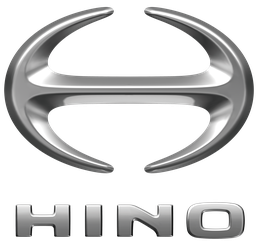
Hino Motors, Ltd., is another specialist of trucks, buses and other specialized vehicles headquartered in Hino, Tokyo. Established in 1942 it was corporate spin-off from previous manufacturers, back to the Tokyo Gas Industry Company in 1910. In 1910, Chiyoda Gas Company was created to compare against Tokyo Gas Company for gas lighting users. Chiyoda GC later merged into Tokyo Gas in 1912 and the compan morphed into Tokyo Gas and Electric Industry (TG&E) or Gasuden, producing its first motor vehicle in 1917, the Model TGE "A-Type" truck. In 1937, TG&E merged with Automobile Industry Co., Ltd. and Kyodo Kokusan K.K., creating "Tokyo Automobile Industry Co., Ltd." and in 1941 Diesel Motor Industry Co., Ltd., later Isuzu.
In 1942 Hino Heavy Industry Co., Ltd. was created as a division of Diesel Motor Industry Co., Ltd. and notably manufactured for the IJA the
Type 1 Ho-Ha half-track and
Type 1 Ho-Ki armored personnel carrier. After 1946 it had to stop production of large diesels for marine applications and concentrated on heavy-duty trailer-truck, buses and diesel engine. By 1948, it separated into Hino Diesel Industry Co., Ltd and Hino Diesel Sales. The company however was no longer profitable in the 1960s and by 1966 an agreement was found to merge with Toyota. By April 1967, Hino started assembling light vehicles for Toyota. In the 1960s, Hino launched medium and heavy duty trucks such as the TC300, KF and by March 1964 the medium KM series "Ranger" and in the 1970s introduced the "red" diesel engines featuring better fuel efficiency with MAN technology.
Precise Vehicles
 Nissan Patrol
Nissan Patrol
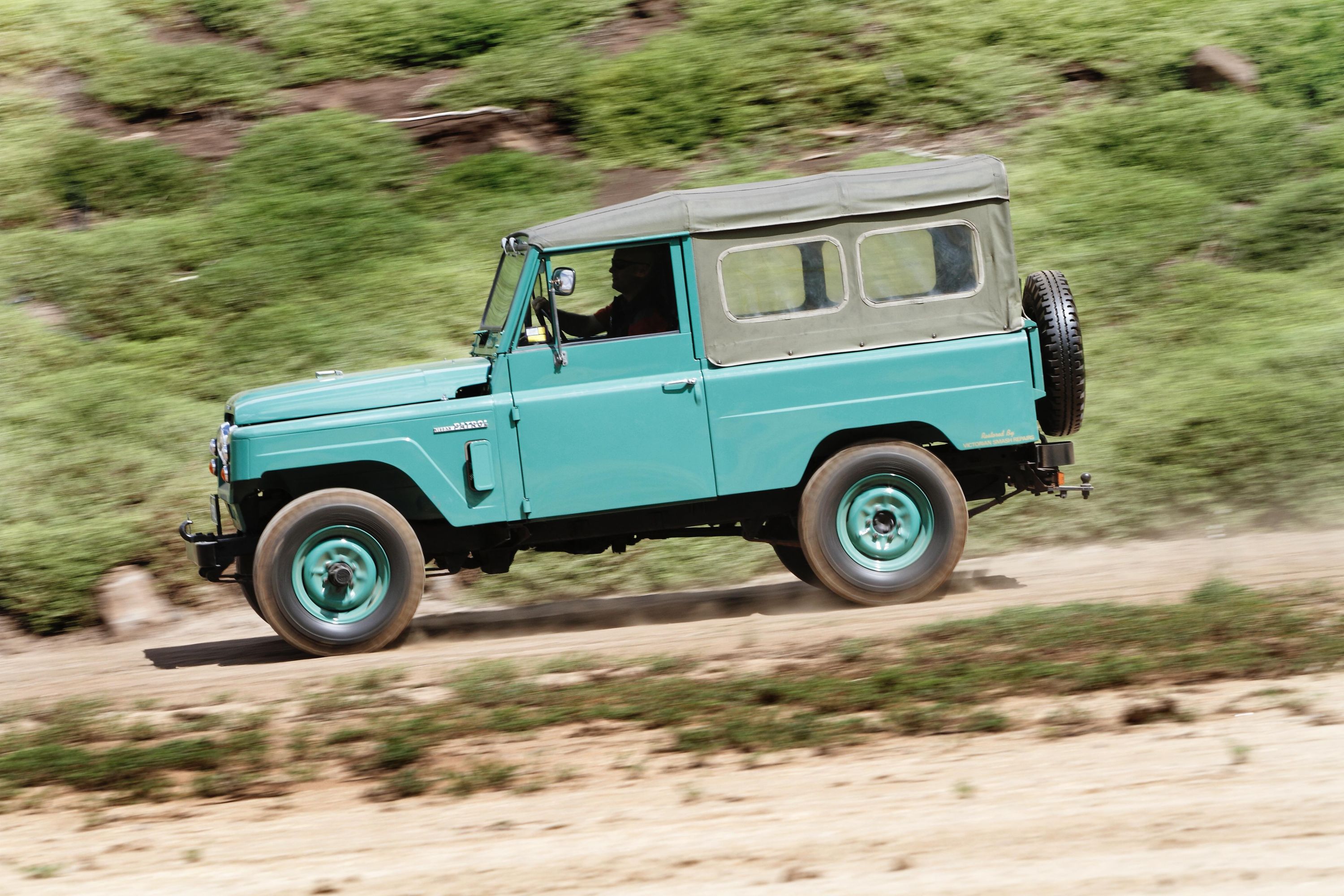
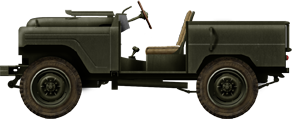 Nissan Patrol
Nissan Patrol
The Nissan Patrol is a series of full-size SUVs and off-road vehicles manufactured by the Japanese automaker Nissan. The Patrol has a long history and has been in production since the 1950s. It is known for its ruggedness, off-road capabilities, and its popularity in various parts of the world for both civilian and military use.
Generations and Models, with each featuring various models and updates comprised the G60, GQ (Y60), GU (Y61), and the more recent Y62. The Patrol is renowned for its excellent off-road capabilities, featuring a robust four-wheel-drive system, ample ground clearance, and advanced suspension systems that make it suitable for tackling challenging terrain.
Engine Options: The military one had the diesel one, and featured a open configuration, 2-door and seating at the back, or pickups. In basic form it could carry 5 including the driver and a flatbottom section receives various types of armament, from LMGs to Manpads or recoiless guns. The model was popular in many countries, notably the Middle East, where it's used by police and military forces.
 Isuzu HST12G Medium Truck
Isuzu HST12G Medium Truck
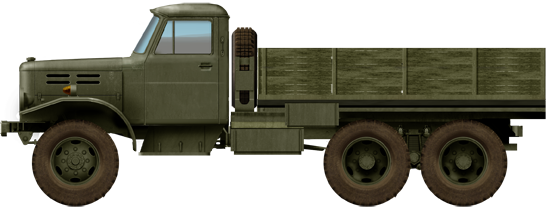
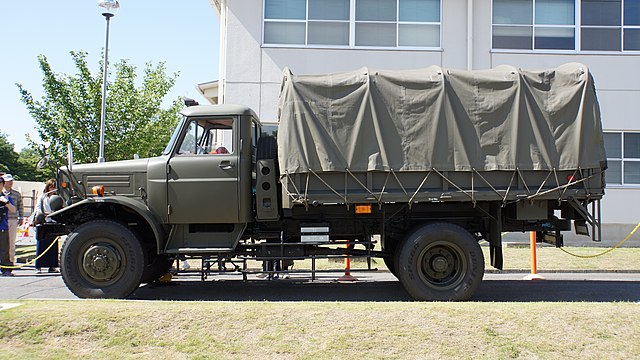 Another at Nara base in 2015.
Another at Nara base in 2015.
No details so far. The name is perhaps different or it's a sub-variant under the Type 73 main type.
 Mitsubishi Type 73 Medium Truck
Mitsubishi Type 73 Medium Truck
The Mitsubishi Type 73 is a series of medium-duty military trucks and utility vehicles produced by the Japanese automotive manufacturer Mitsubishi Motors Corporation for the Japan Ground Self-Defense Force (JGSDF). These trucks are widely used in various military roles, including transportation, cargo transport, troop transport, and as a platform for various specialized military equipment.
The Type 73 medium truck series includes several variants with different configurations to meet various operational requirements. Some of the common variants of the Type 73 medium truck include cargo trucks, troop carriers, command vehicles, ambulance variants, and more. These vehicles are known for their reliability, durability, and off-road capabilities, making them well-suited for military operations.
 Hino Ranger
Hino Ranger
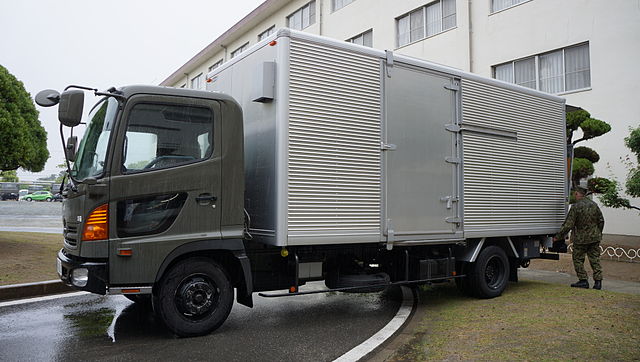 HINO_RANGER_in_senzou_2013
HINO_RANGER_in_senzou_2013
The Hino Ranger is a series of medium-duty commercial trucks produced by Hino Motors, a Japanese manufacturer known for its trucks and buses. The Ranger series is designed for various commercial and industrial applications, including cargo transport, construction, and other vocational purposes.
 Isuzu Type 73 ougata
Isuzu Type 73 ougata
The Isuzu Type 73 Ōgata is a medium-duty military truck used by the Japan Ground Self-Defense Force (JGSDF), part of the Type 73 series of military vehicles. The "Ōgata" in the name refers to it being a large-sized version of the Type 73 truck. It is capable of transporting troops, cargo, and equipment and is available in different configurations, troop carriers, cargo, dump truck and and specialized variants for various military purposes (tanker, with cabin, ambulance, etc). Various engines are provided, the Isuzu 8PC1 V6 diesel, Isuzu V8 diesel and Isuzu 8PE1 V8 diesel
rated for 210 hp, 240 hp and 286 hp respectively. All only exist as 6x6, between 6.64 t, 7.98 t and 8.6 t and with a 3.5t payload. They exist in fully enclosed and simple open cab with tarp.
Main versions includes the cargo truck with crane, dump truck, shelter carrier, fuel and water tanker, light wrecker, and more properly military models such as the Type 81 and Type 11 air defense missile systems.
 Mitsubishi 8x8 chassis
Mitsubishi 8x8 chassis
Thanks to the partnership with MAN, and based on recent specifications, a family of heavy duty 8x8 vehicles was designed to fill many unanswered niche roles in the JSDF. Mitsubishi Heavy Industries developed for this a very rugged universal 8x8 wheeled chassis starting tests in 2002. The first was the Type 02 heavy recovery vehicle. It is also the carrier for the Type 03 air defense missile system, Type 12 anti-ship missile system as TEL. The planned Type 19 155 self-propelled howitzer was replaced by a German MAN HX77 chassis. The front cabin in a cab over engine configuration carried a driver and 2 passengers. It had no roof hatch, no provision for any defensive armament but a storage rack instead on the cab roof.
 Mitsubishi Type 73 Light Truck Kyū
Mitsubishi Type 73 Light Truck Kyū

The Mitsubishi Type 73 Light Truck are a series of multiporpose jeep like general purpose vehicles, under production by Mitsubishi Motors since 1973. The JSDF official designation, following US practive, is 1/2 Ton Truck. They are powered by a Mitsubishi 4-cylinder diesel engines rated for 123 horsepower. for a mass of 1,450 kg (3,197 lb), and relatively larger than a WW2 Jeep, with 3,750 mm (147.6 in) long for 1,650 mm (65.0 in) in width. Engines comprised the 2.2l JH4, 2.3l KE47 Diesel 2.7l 4DR5, 4DR6 with direct injection and turbocharged with a Manual transmission. It had a folding windshield, optional tarpaulin, two forward seats and four side folding seats, leaving free the flatbed for useful payload, including a bolted mount for various ordnances, from the M2HB HMG to recoiless rifles. These were exported also to the Philippines, Thailand, and South Vietnam for a time.
 Mitsubishi Type 73 Light Truck Shin (Kogata)
Mitsubishi Type 73 Light Truck Shin (Kogata)

The Mitsubishi Type 73 Light Truck (Shin) is the replacement for the original Type 73, and started production in 1996 to replace the previous Type 73 Light Truck "Kyūs" in the JSDF, using the frame of the Mitsubishi Pajero as a basis. An enclosed model with classic doors (2 doors config.) it still had the same rear arragement with four folding seats and a pintle that can mount various heavy machine guns and anti-tank missile launchers. It can mount also the Sumitomo M2 machine guns and the Sumitomo MINIMI Light Machine Gun. Some were deployed to Iraq (JIRSG) but they had to be bulletproofed, a way to alleviate art.9 of the constitution in case of attack (Japanese troops were forbidden to fire back).
The new vehicle had all the modern niceties of the Pajero, but weight 1,940 kg (4,277 lb) for 4,140 mm (163.0 in) in lenght, 1,765 mm (69.5 in) in width, and powered by a Water-cooled 4-cycle, 4-cylinder Diesel engine 4M40, 4N15 (2014-) 125 HP served by a 4-speed Automatic transmission. Currently the staple of light personal vehicles in JSDGF units. They are seeing also action in Ukraine.
 Toyota Type 73 Chugata
Toyota Type 73 Chugata
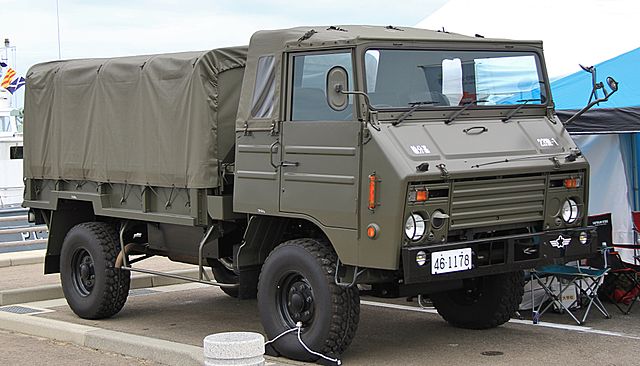 Toyota Type 73 Medium Truck
Toyota Type 73 Medium TruckThe Type 73 Medium Truck is an all-terrain four-wheel drive (4x4) truck of the Japan Ground Self-Defense Force known as the 1 1/2 Ton Truck. This truck replaced various types in service, like the 3/4 ton truck by Toyota and Nissan in service since the 1950s, notably due to the high fuel consumption (gasoline engine). There was a competitive bidding Toyota and Hino Motors, being selected for the Type 73 Medium Truck. In short, it weights 3,200 kilograms (7,100 lb) for 5.36 x 2.09 x 2.49 m in size, 2+16 capacity, powered by a Toyota 1W water-cooled 4-cylinder, 4,009 cc (244.6 cu in) diesel rated for 86 kW (115 hp), 5-speed manual transmission, a payload of 2,000 kilograms (4,400 lb) range 800 km and top speed 87 km/h.
 Isuzu Type 73 Ougata
Isuzu Type 73 Ougata
A modernized version was also produced as the Type 73 Ougata, which Entered service in 1987, and by 1999 a third one, which replaced the 1970s vehicles gradually in the JSDGF. The latter is slightly larger and heavier than two previous ones, with a new cab, more powerful engine (Isuzu 8PE1 V8 diesel 286 hp), a payload capacity of 3.5 t (off road) and 6 t on road. The standard troop/cargo version is able to carry 22 soldiers, tow trailers and ordnance up to 6 t. It is used also for the Type 81 and Type 11 air defense missile systems.
 Toyota Mega Cruiser (1995)
Toyota Mega Cruiser (1995)
 Toyota Mega Cruiser at Camp Akeno, Nov. 2017
Toyota Mega Cruiser at Camp Akeno, Nov. 2017
The Toyota Mega Cruiser is a large, heavy-duty 4x4 SUV introduced in 1995, largest ever built by Toyota and very close in hilosophy to the Humvee. It was clearly designed for military use as transport vehicle but also prefectural police, Japan Auto Federation and fire and rescue departments. 3,000 units were manufactured until 2001. They are powered by a massive 4.1L 15B-FTE I4 turbo-diesel engine, and 4-speed Aisin A443F automatic tranmission.
 BX700 548 SPAA
BX700 548 SPAA
Like the Humvee, the Mega Cruiser can be declined into a variety of models, the Mega Cruiser (BXD10) HMV (general purpose, with a fixed rear cabin or tarp); the Missile launcher BXD10 mounting the Type 93 SAM by Toshiba; and the Mega Cruiser (BXD20) for the civilian market (Only 133 made). The model never was profitable for the company.
 Kawasaki KLX250S (2006)
Kawasaki KLX250S (2006)

A military version of the civilian trail, it has a 249 cc four-stroke single cylinder. It replaced the KLR250.
 Hitachi Type 73 Arty Tractor
Hitachi Type 73 Arty Tractor
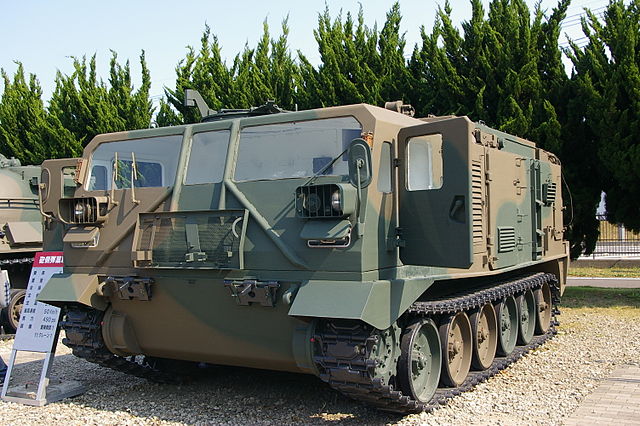 Hitachi Type 73 artillery tractor (1974)
Hitachi Type 73 artillery tractor (1974)The first production of the Type 73 was in 1974, built by Hitachi as a domestic replacement for the American M4 and M8 high-speed tractors. It was never produced in large numbers, as self-propelled artillery became the new focus. The cab and gun crew compartments of the Type 73 are fully enclosed steel, with ammunition carried in a separate compartment at the rear. A 400 hp Mitsubishi diesel engine powers full tracks, and armament is a single 12.7mm anti-aircraft machine gun. The Type 73 was intended to tow weapons such as the 155 mm Long Tom gun and the M115 203 mm howitzer. It can also be fitted with a dozer blade, or alternatively, the Type 92 mine roller. Note: It's likely to be covered in Tank-afv.com if it's found armoured.
Src/Read More
Mitsubishi_Type_73_Light_Truck
mitsubishi_8x8_chassis
type_73_kogata
type_73_ougata
type_73_ougata_modernized
Toyota_Type_73
Current_vehicles of the JSDGF
Isuzu_TS/TW_in_military_service
Hino_Motors
Mitsubishi Special Vehicles site